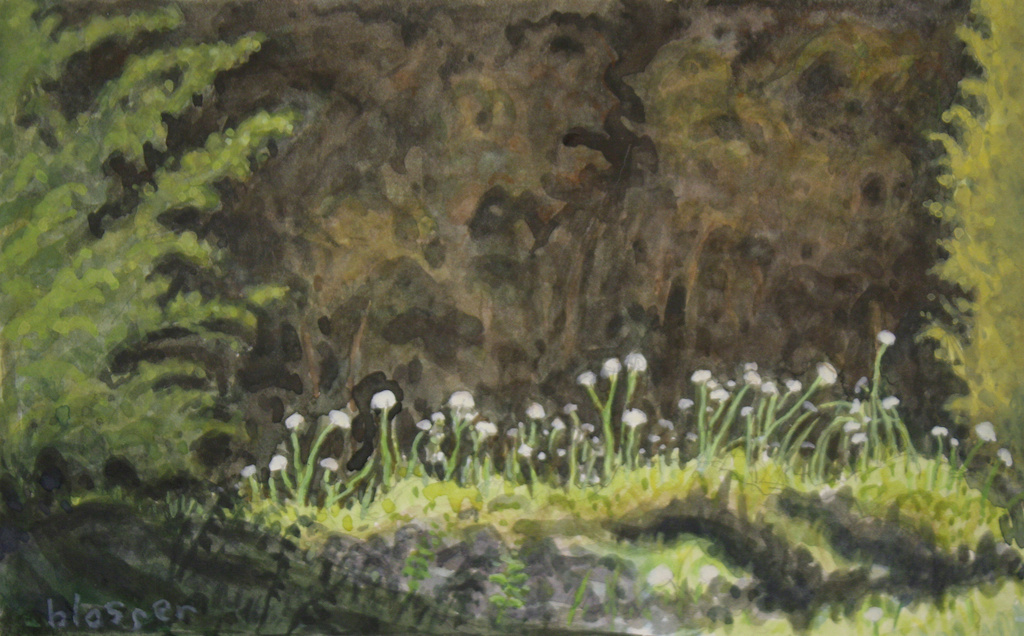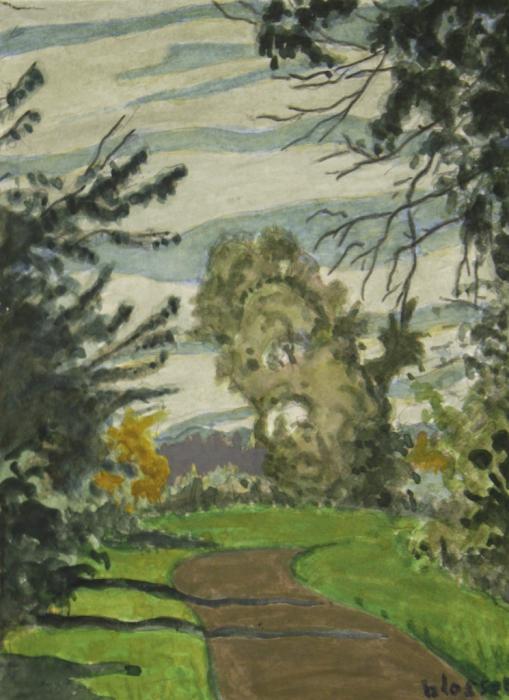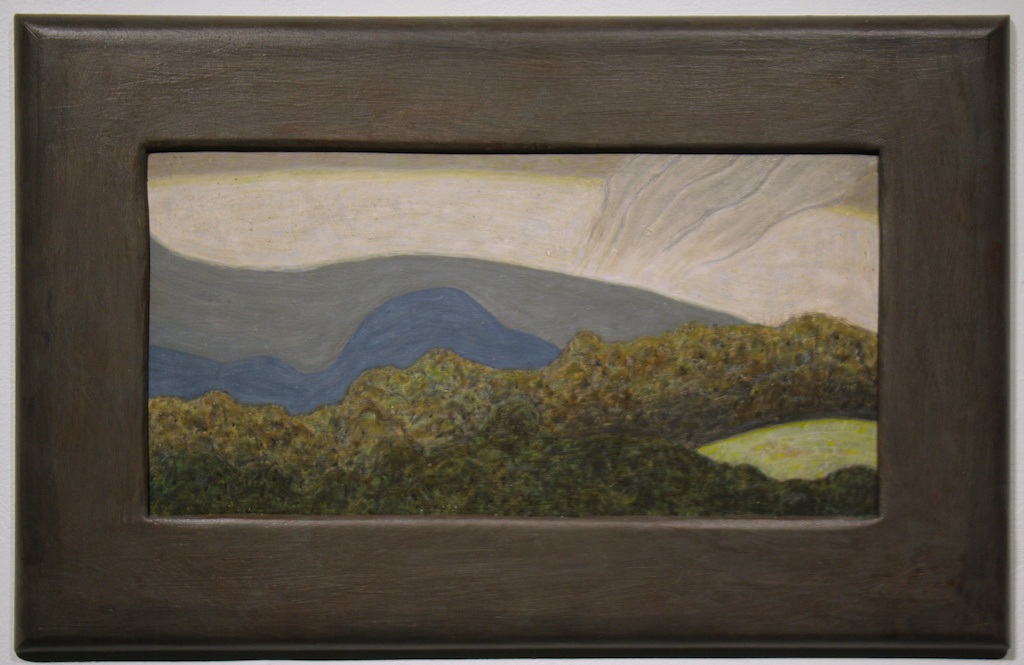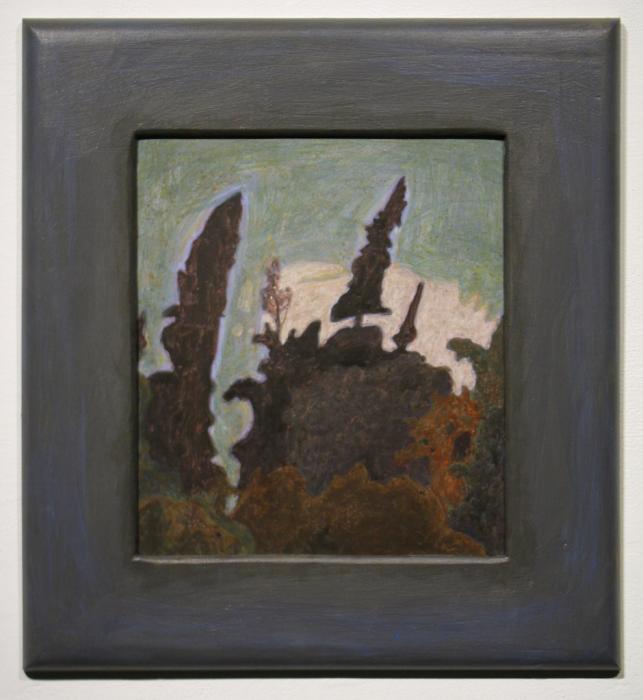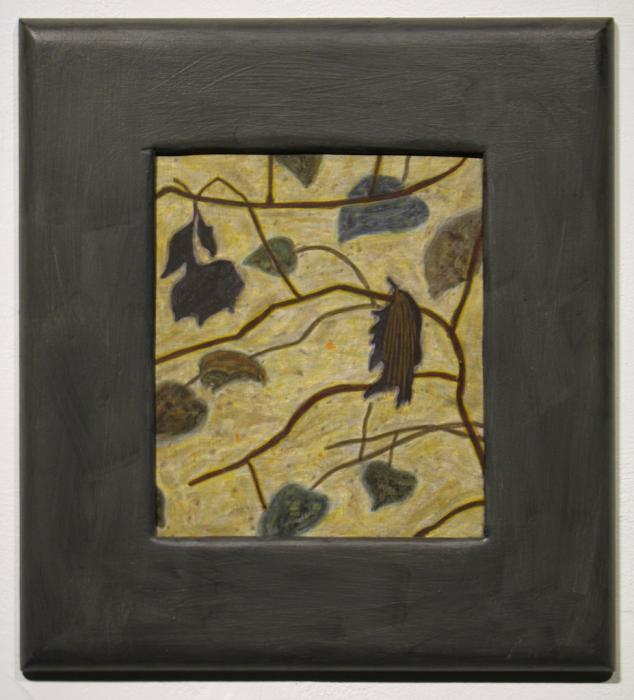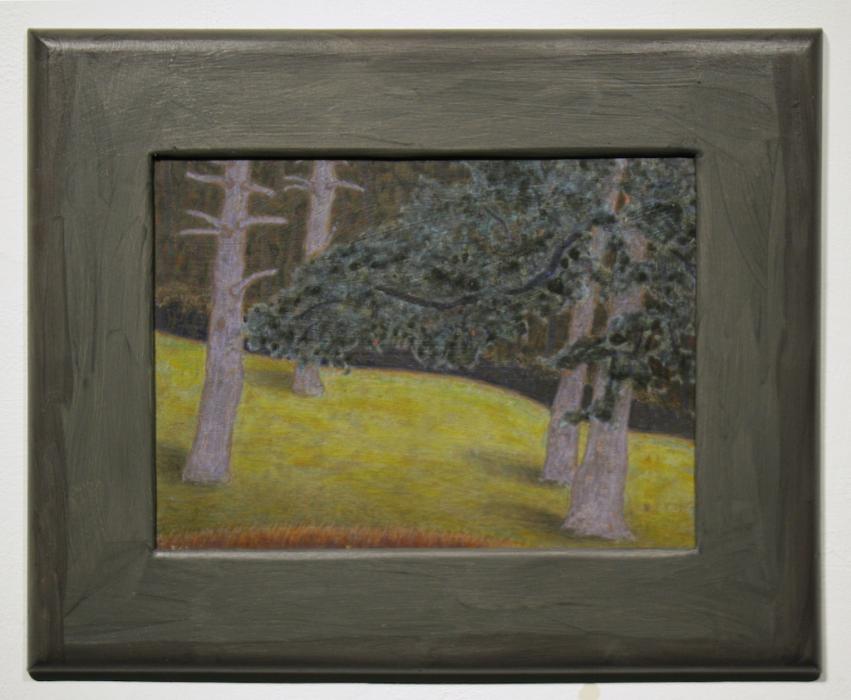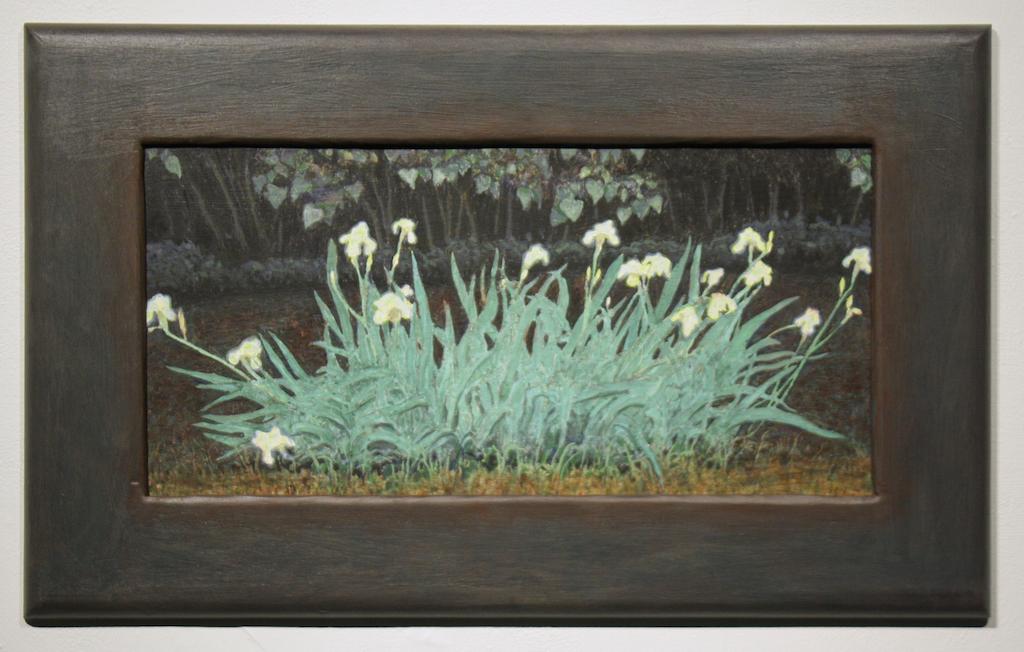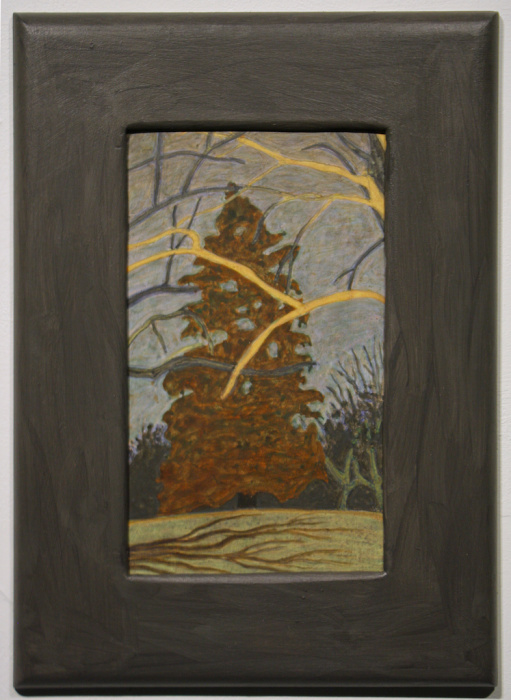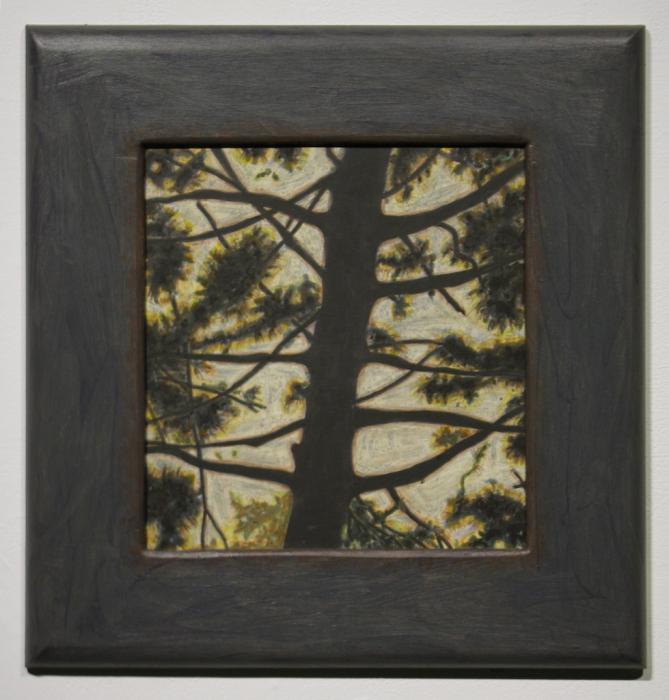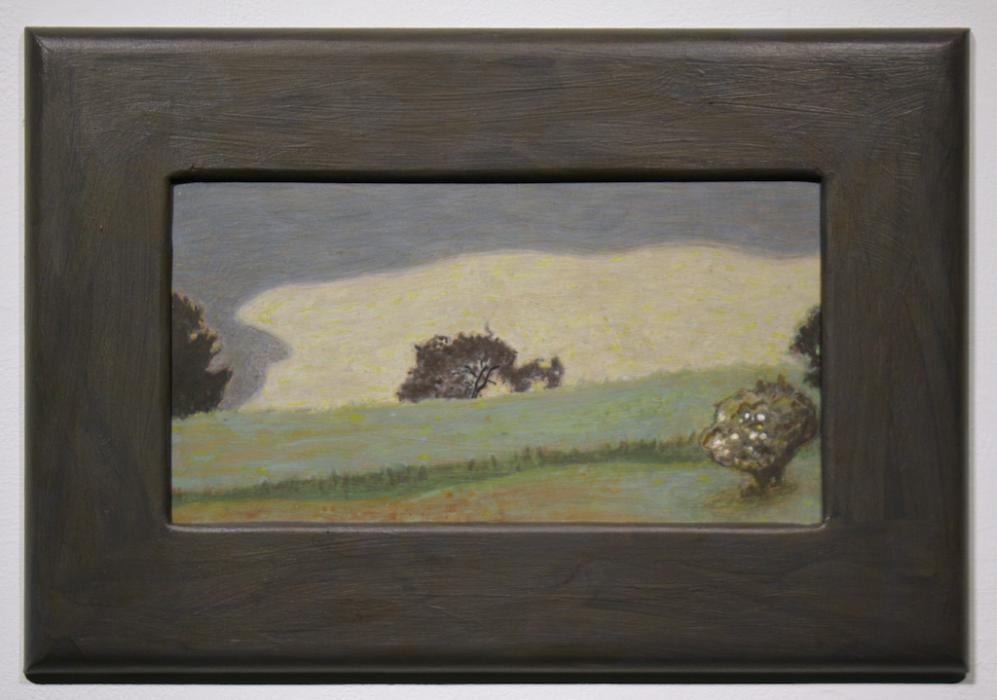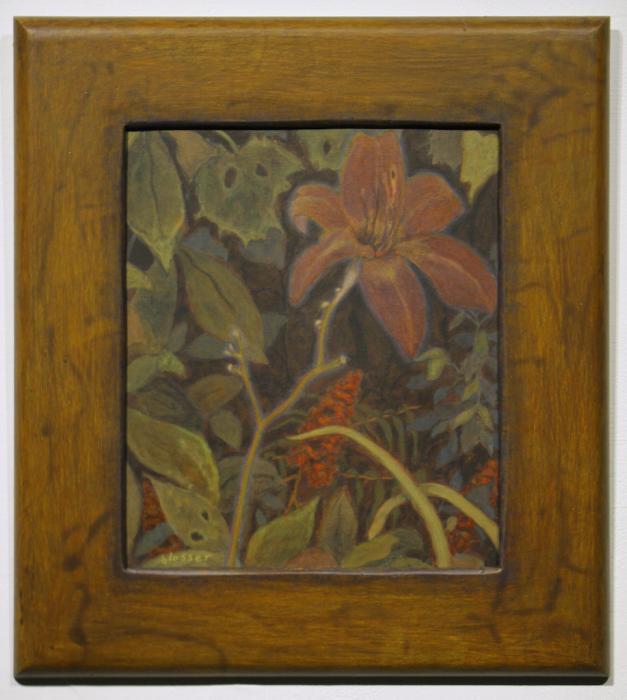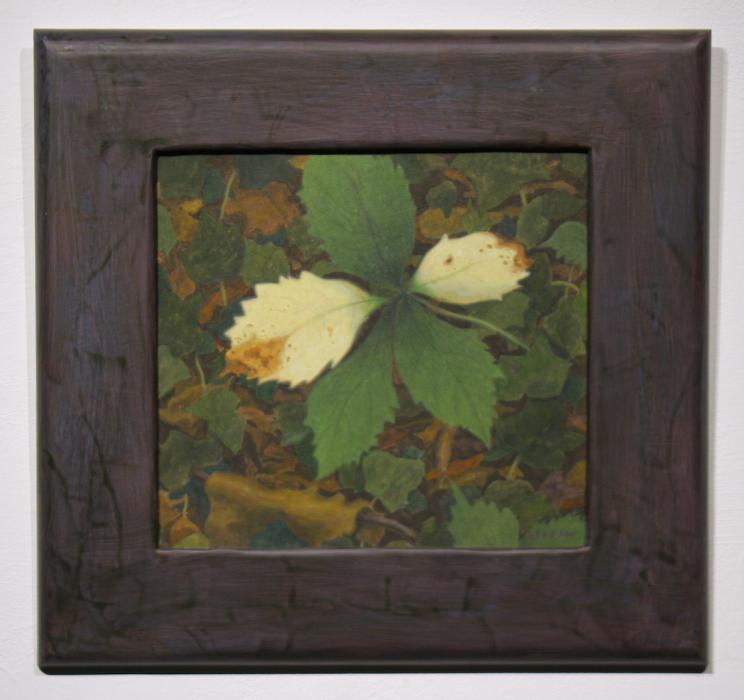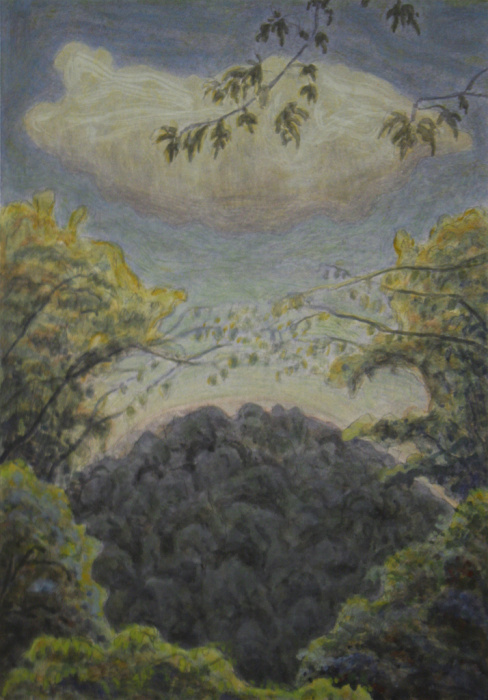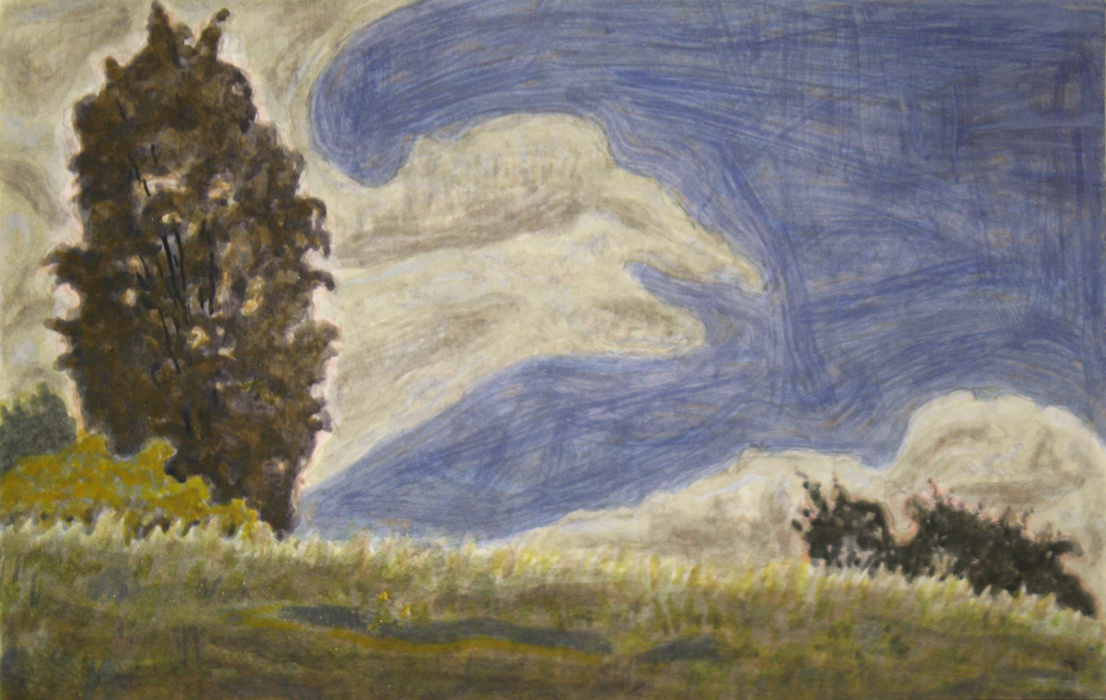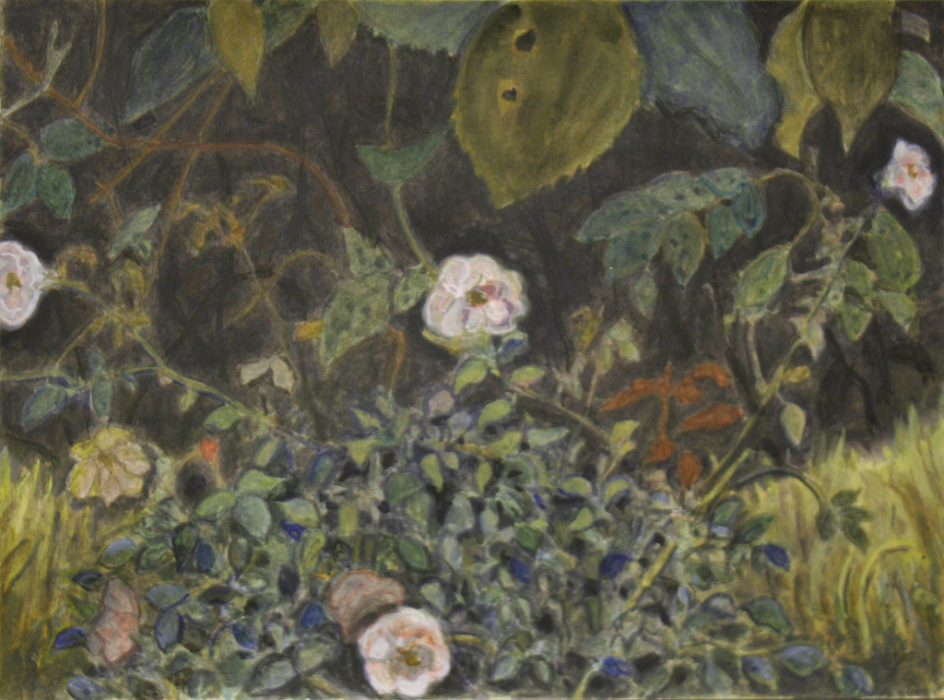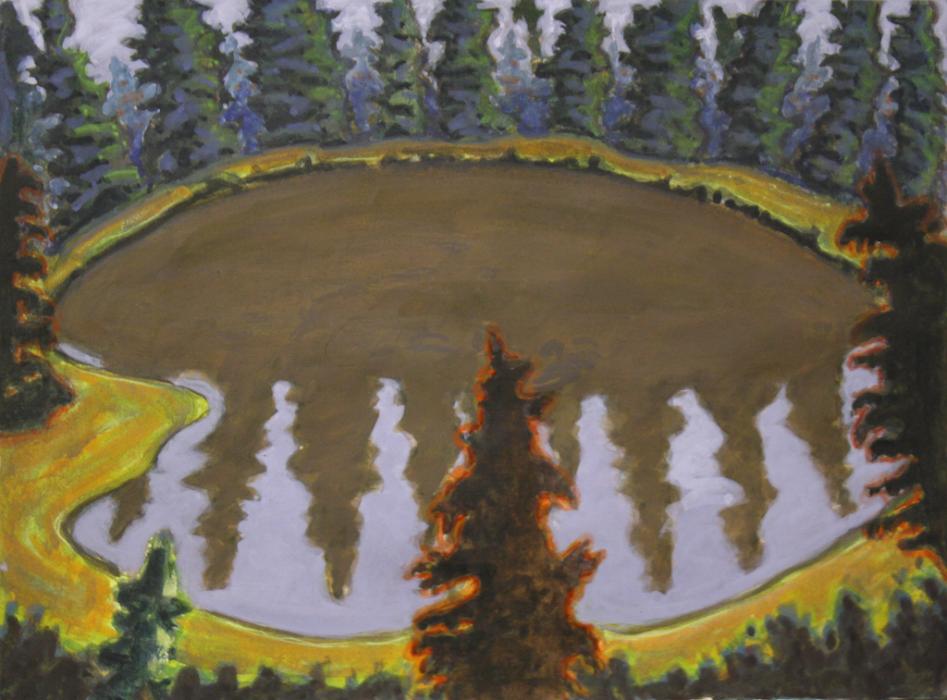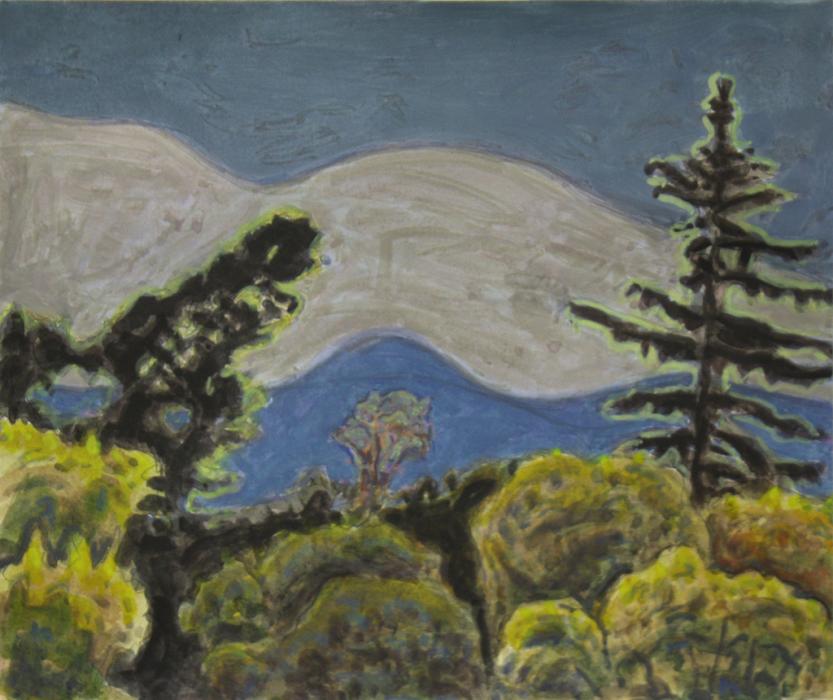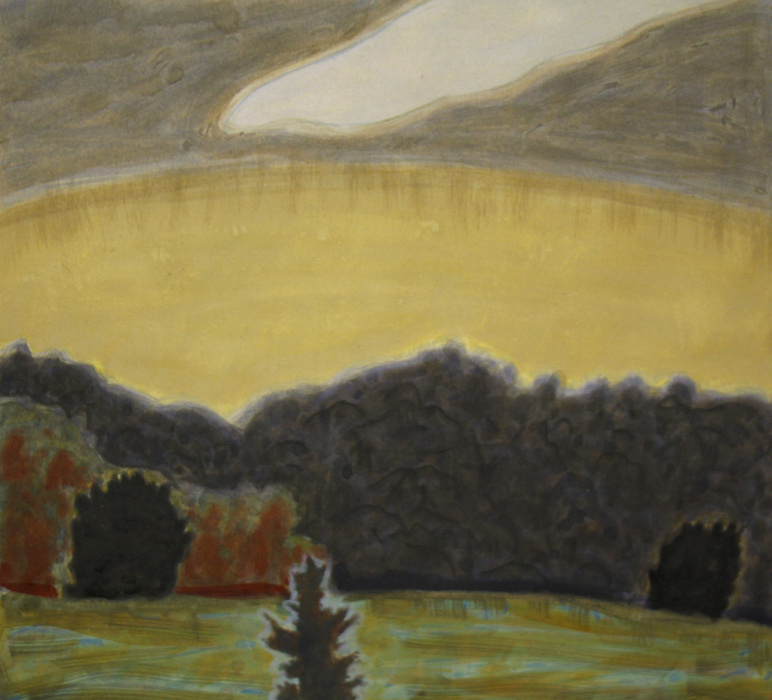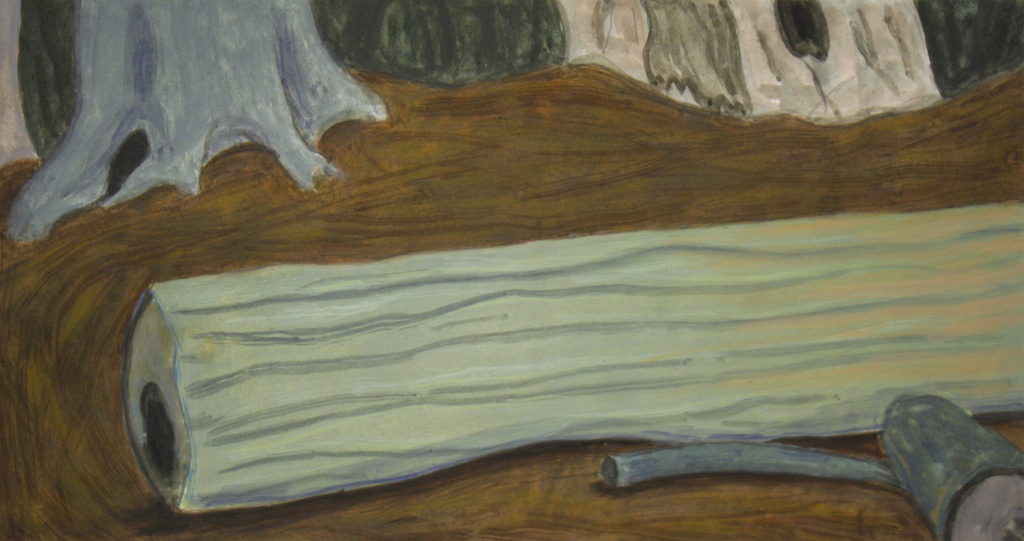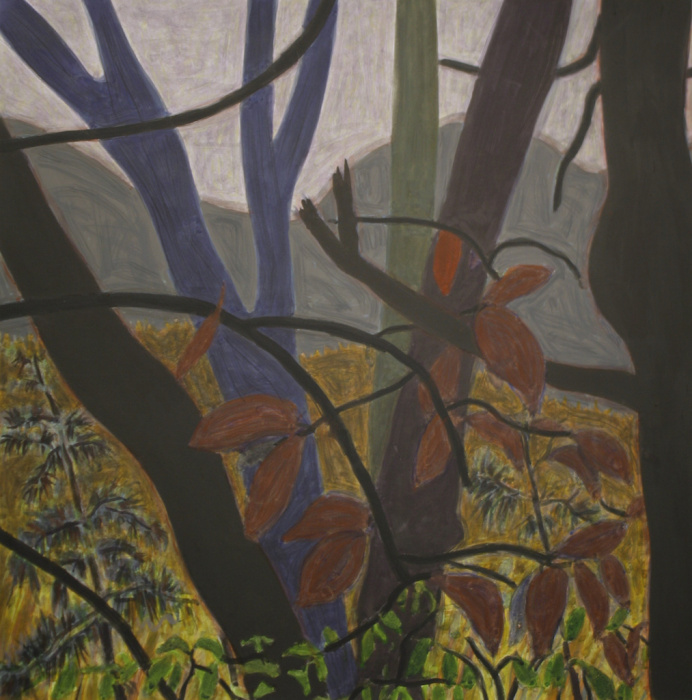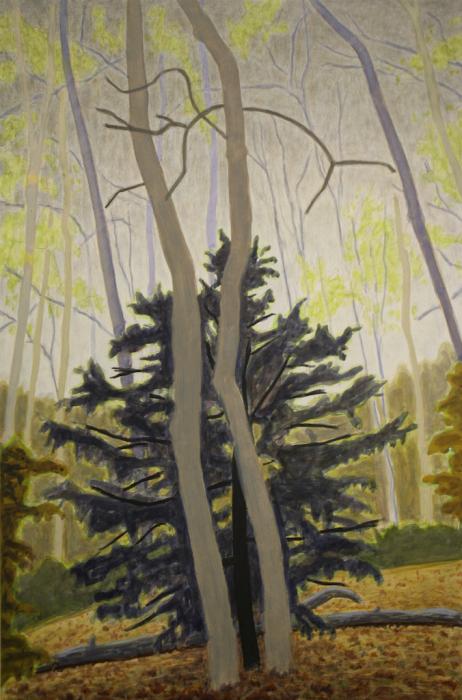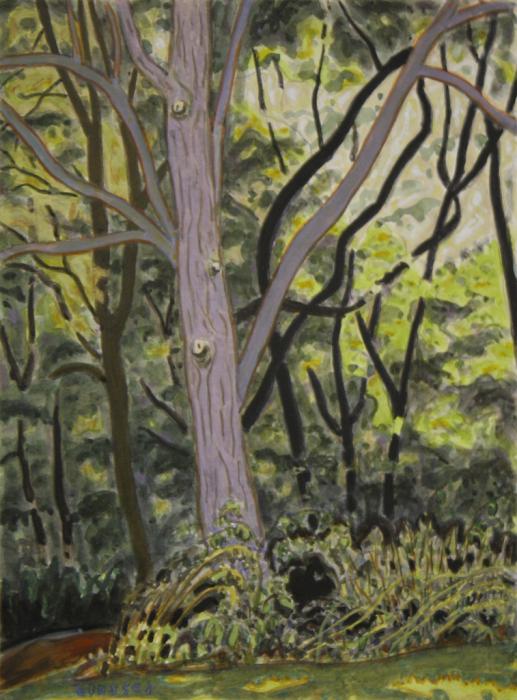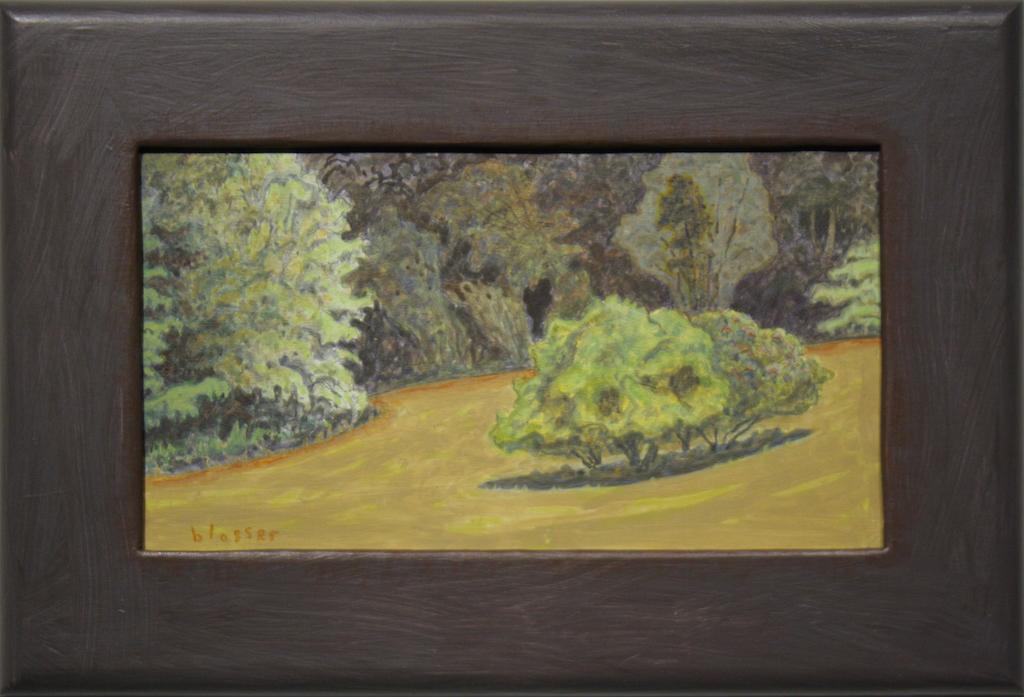Nick Blosser’s paintings arise from deeply felt responses to the natural world. Walking through the woodlands surrounding his studio, Blosser makes quick sketches and watercolors on the spot, focusing on aspects of scenes which move him. While the beauty of the woods are inspiring to him, Blosser is not seeking to record moments of the picturesque. Rather, he pursues a combination of line and form that appeal to his own set of aesthetics and which resonate with his particular mood or emotional reaction at that moment. Blosser then selects the images he wishes to scale up into finished works, again looking for the arrangements that spark his interest.
Blosser paints with somewhat unusual materials and methods, mixing tempera and watercolors applied to wood supports. The result is a chalky surface that absorbs light. The lack of reflectivity allows Blosser’s graphic manner of rendering subject matter to be appreciated clearly. His use of flat paint also allows him to apply color without much modulation and thus distill form into straightforward shapes and planes. Blosser makes his own wood frames, customizing the color of each to enhance the image within. Indeed, every step in the creation of these paintings is deliberately thought out and controlled through a rigorous aesthetic process, as Blosser distills his insights into finished works of art.
Blosser’s watercolor-driven technique and his reductive yet descriptive style link him to a long tradition of American modernist painters, most notably Charles Burchfield, Milton Avery and Arthur Dove. Blosser readily embraces these influences, noting that he grew up in the same area of northeastern Ohio as Burchfield and has visited a number of places depicted by the late watercolorist. Neither the issue of originality nor the fear of being seen as a follower concern Blosser; he is preoccupied with making art that incorporates his wide-ranging concerns.
Blosser has said that he deliberately tries to see what others might overlook in a landscape--to show what is ignored. His careful observation of natural environments with which he is familiar is in fact a deeper connection to American modernism than are the stylistic affinities Blosser shares with that movement. His contrarian embrace of the mundane and willingness to make use of what is around him chime perfectly with the concerns of generations of American artists who have felt a strong connection to the land and celebrated it as a symbol of the commonwealth. Blosser imbues the everyday with a sense of timelessness and wonder, elevating his woodlands into the realm of magic.
- Essay by Jay Grimm
Jay Grimm is a New York-based independent art advisor and art appraiser. He wrote "Charles Burchfield and the Myth Making of America" as his master's thesis in art history at SUNY Stony Brook.
Much of the way we spend our waking hours seems to be connected to our interiors, the places we eat, drink, sleep, work and are entertained. These environments can be comforting or not-so-comforting, stabilizing or threatening, exhilarating or extremely banal. I don't believe the world of nature(exteriors) is necessarily any different, but for myself as a painter, the out-of-doors seems to have unique possibilities. Nature strikes me as less contained in time, less connected to all the things I sometimes yearn to have temporary escape from; cultural trends, technology, politics, daily news, etc. I don't try and live my life ignoring what is important to living in a community of other people, but I like to think art can sometimes take us to a necessary, temporary place outside of that. When I set out to start a painting, I simply prefer to step out of the world of "interiors" and go tramping around in the "exterior", maybe stopping at something I have looked at many times but perhaps this time in a new way.
- Nick Blosser

